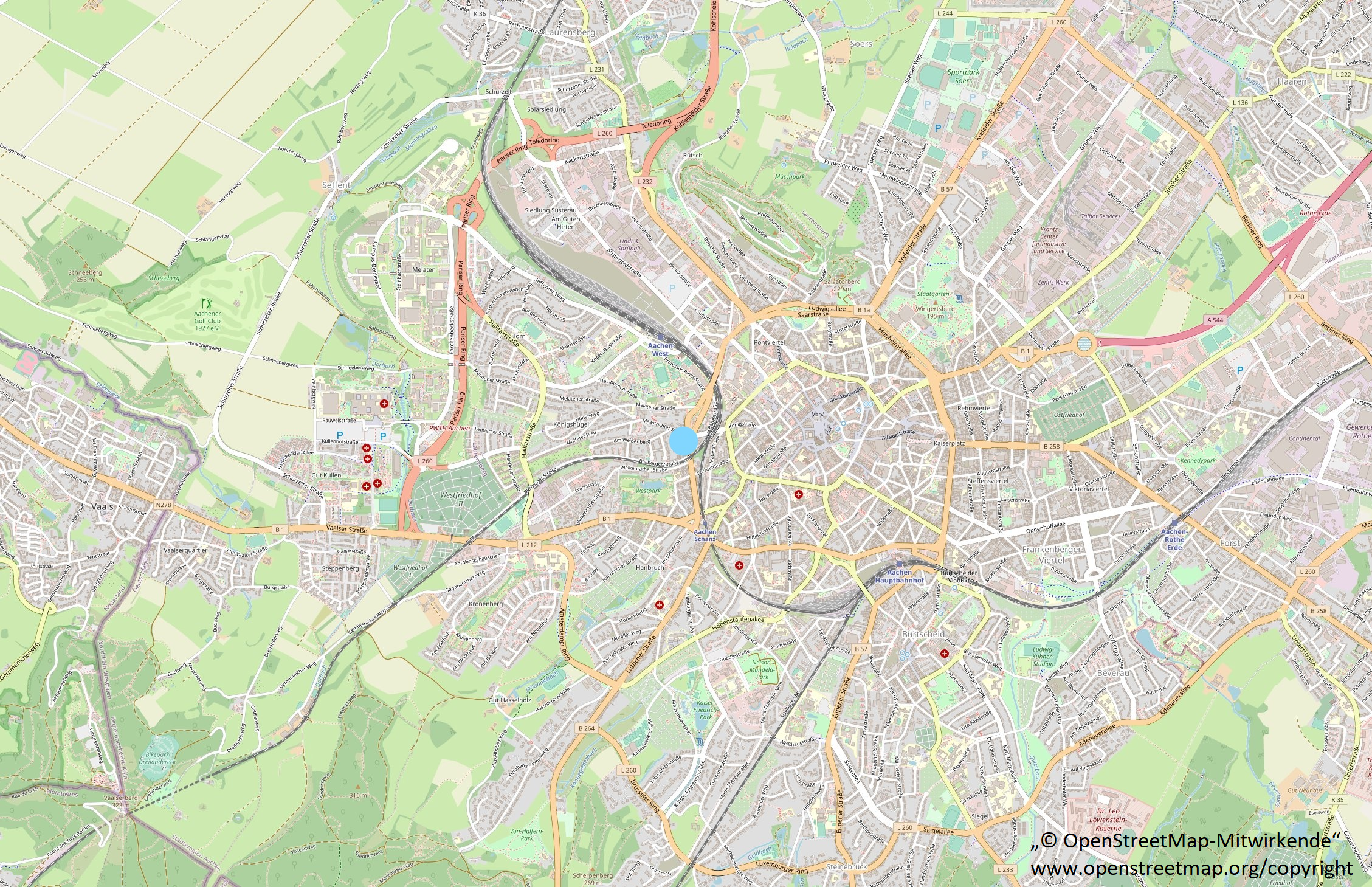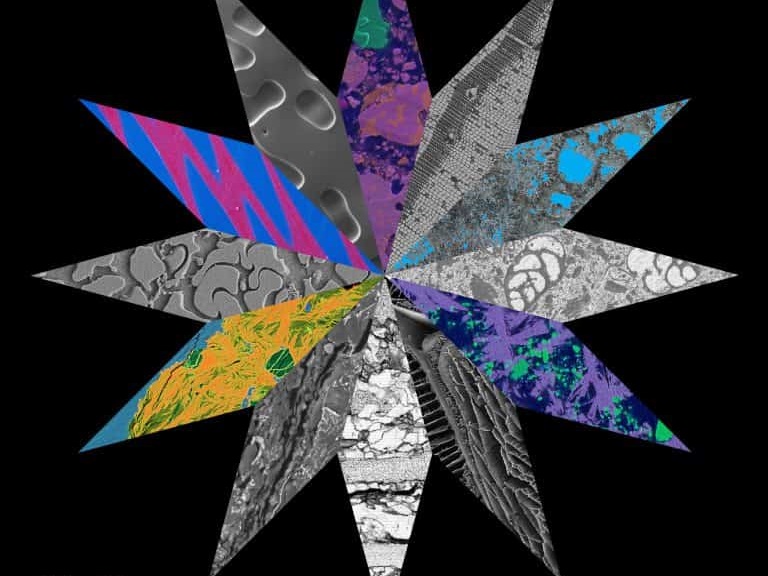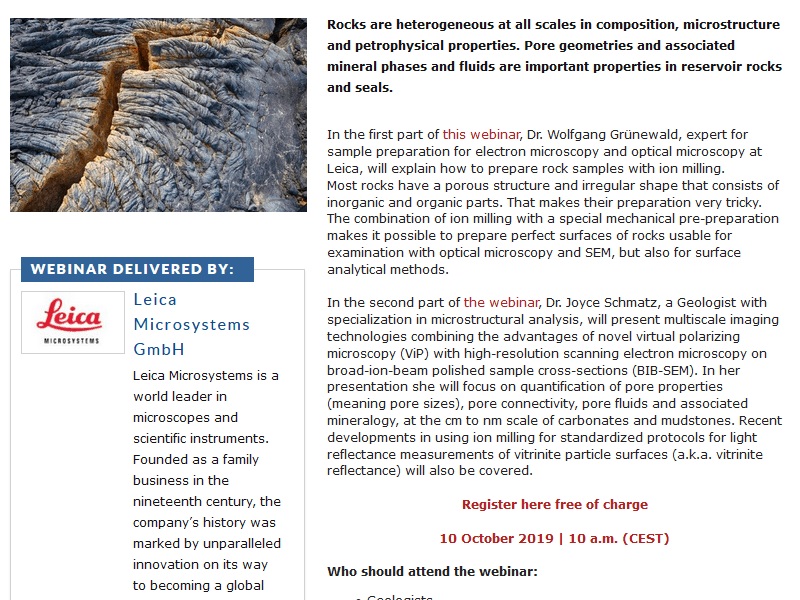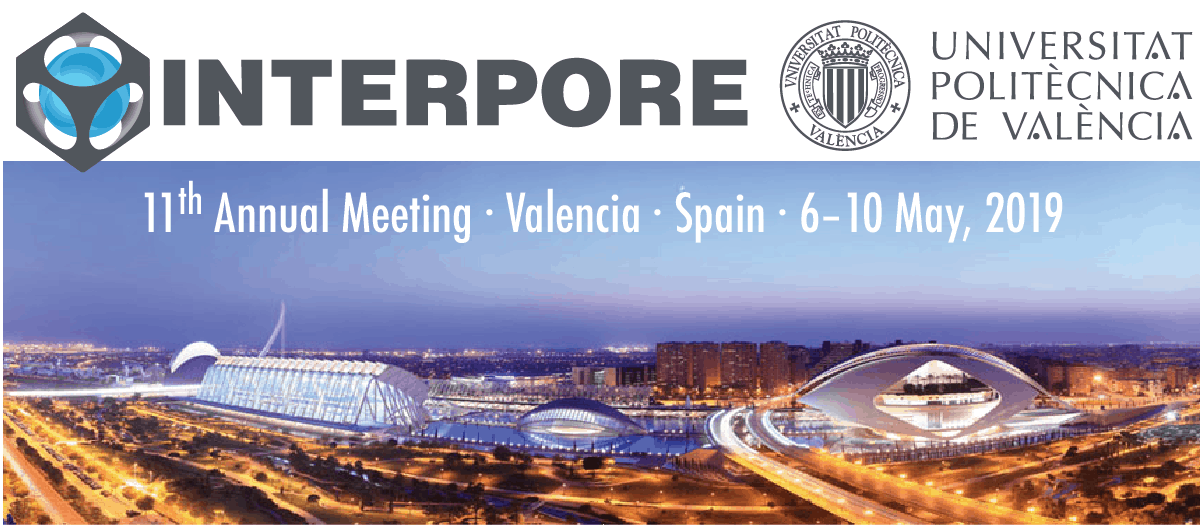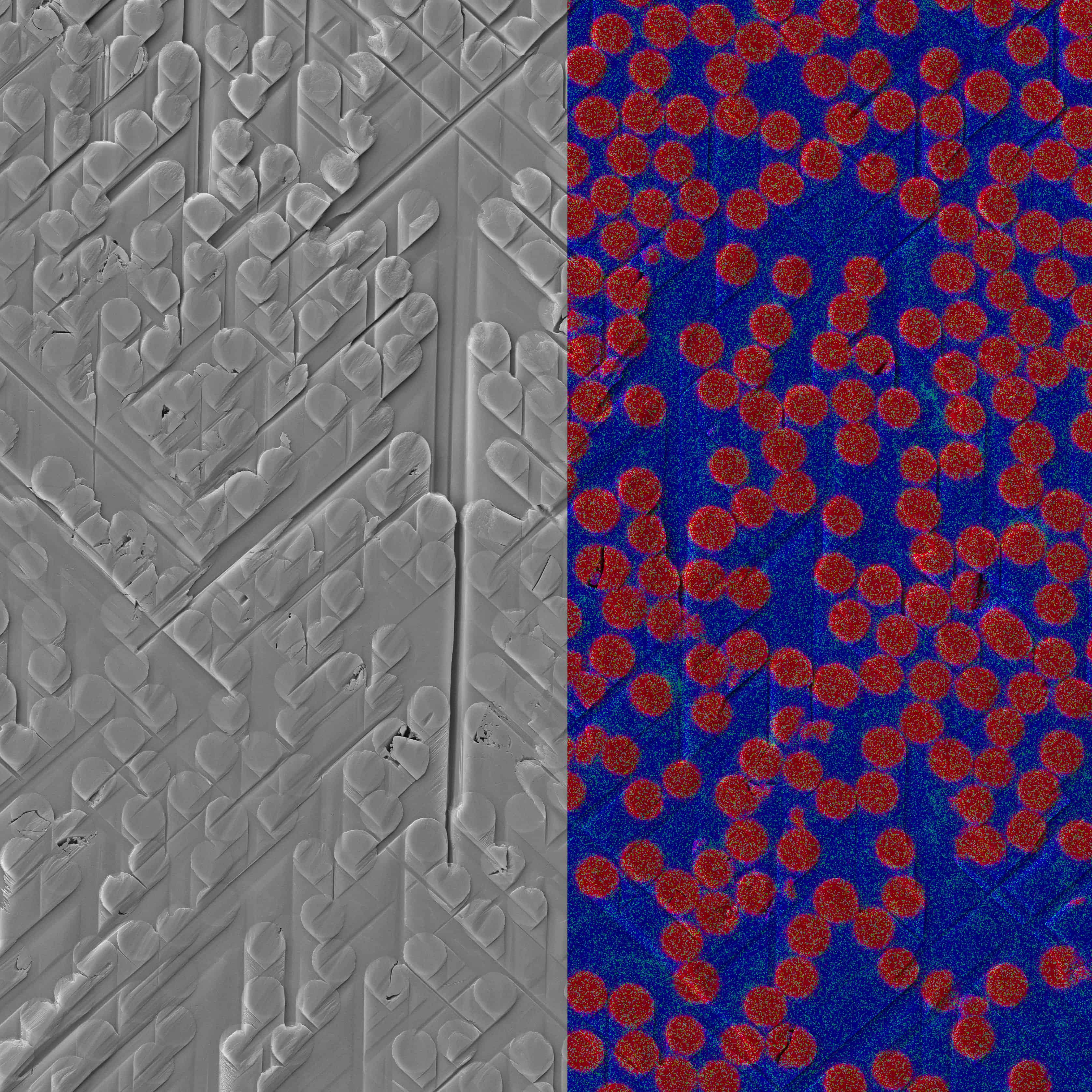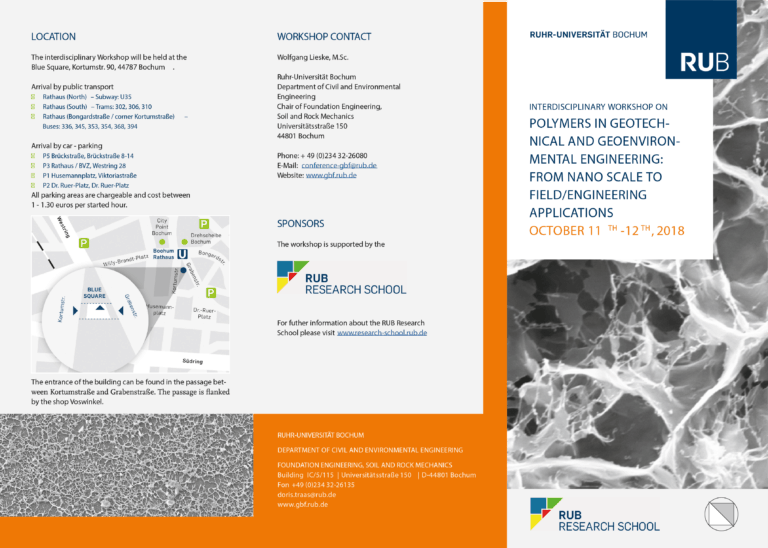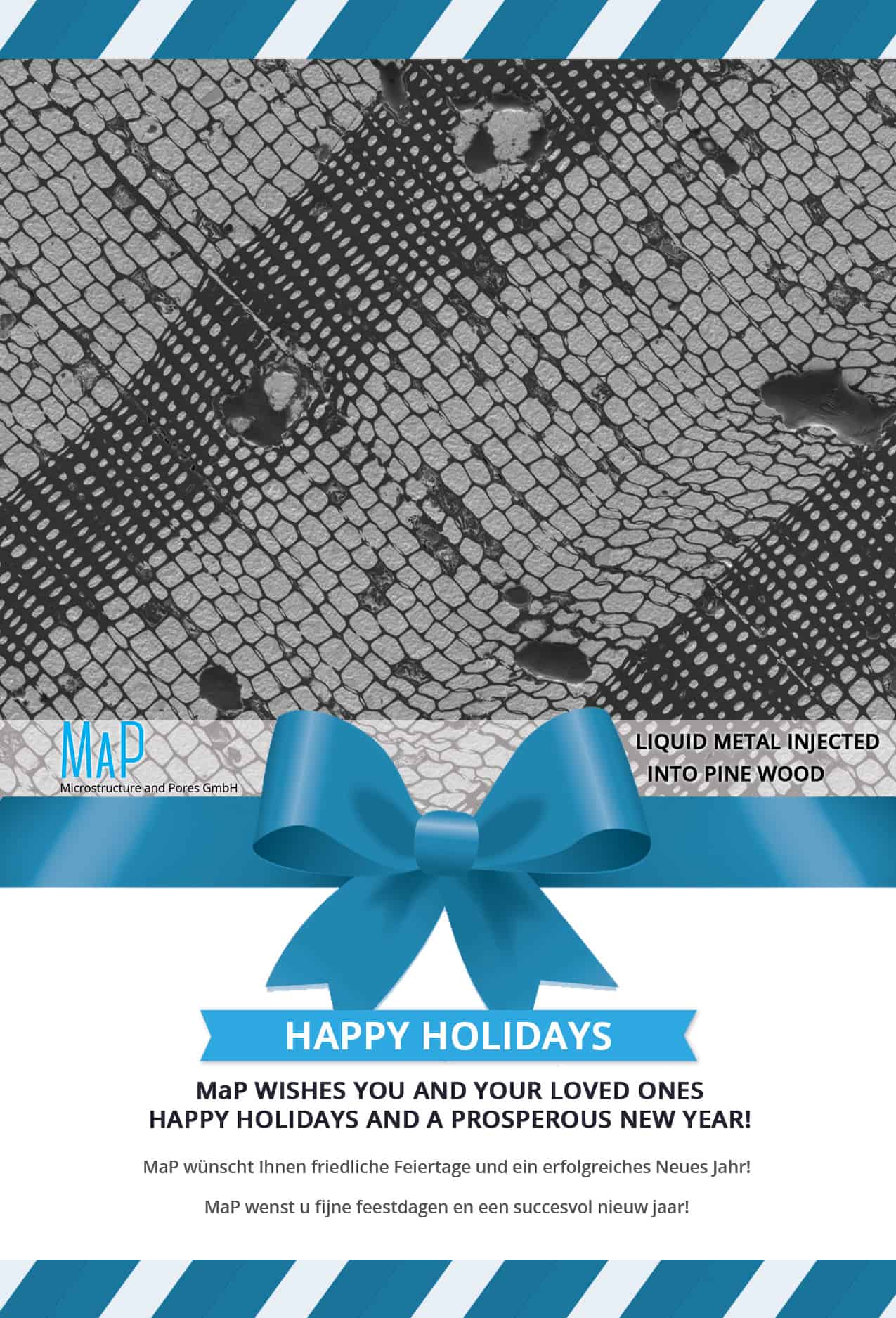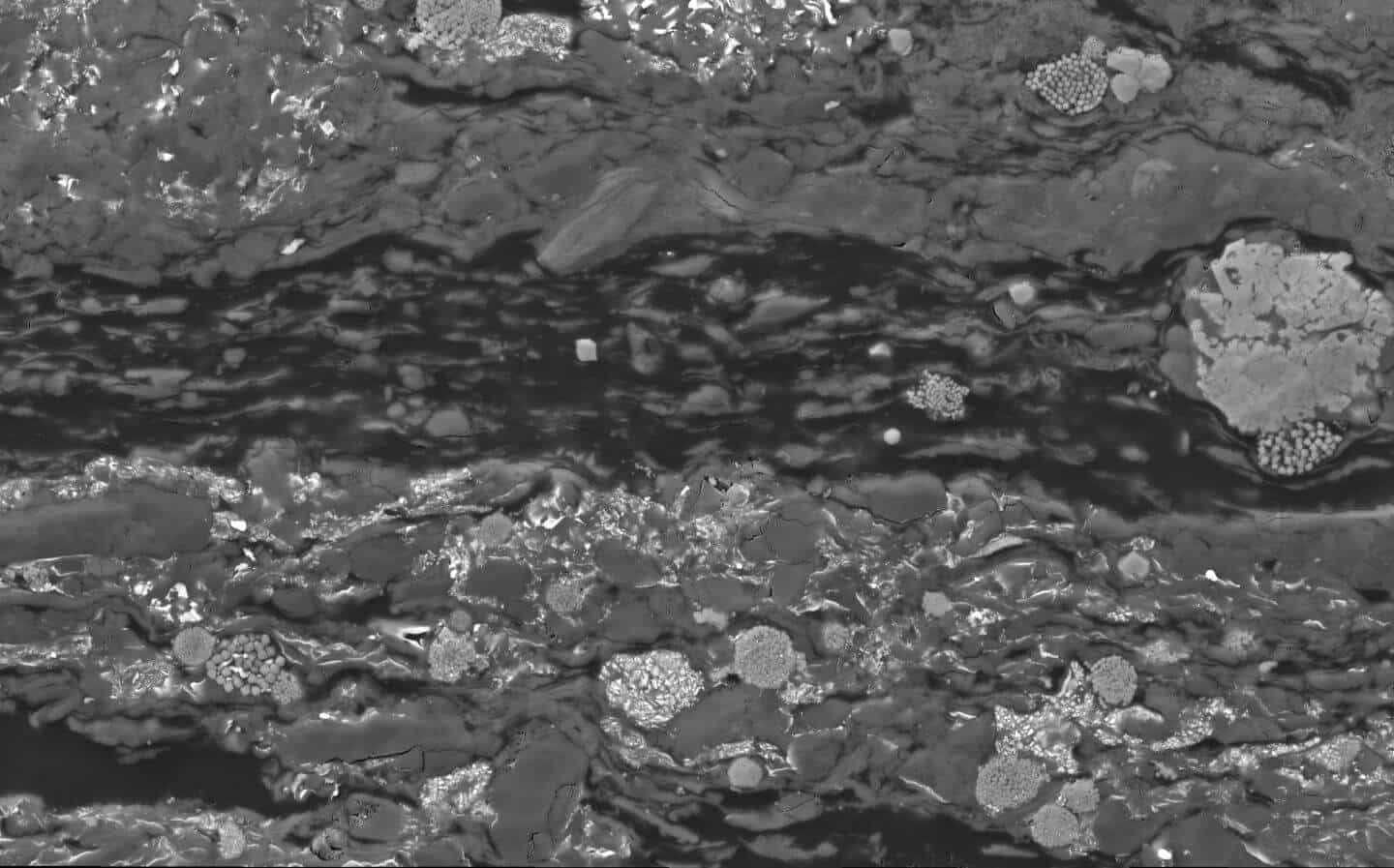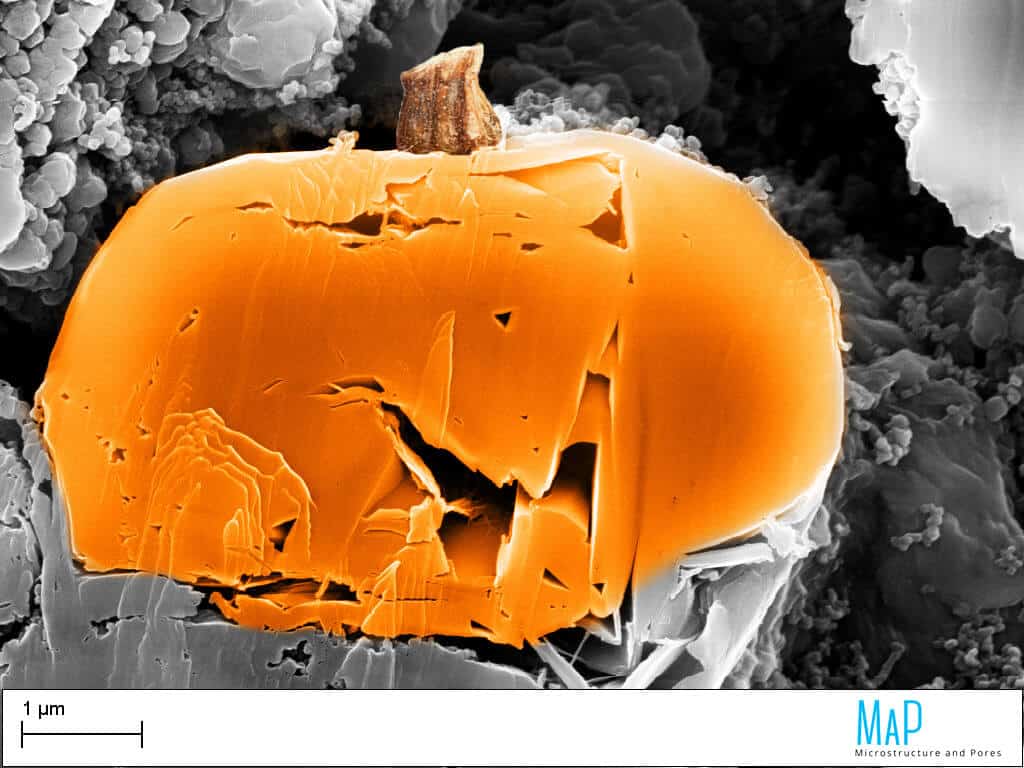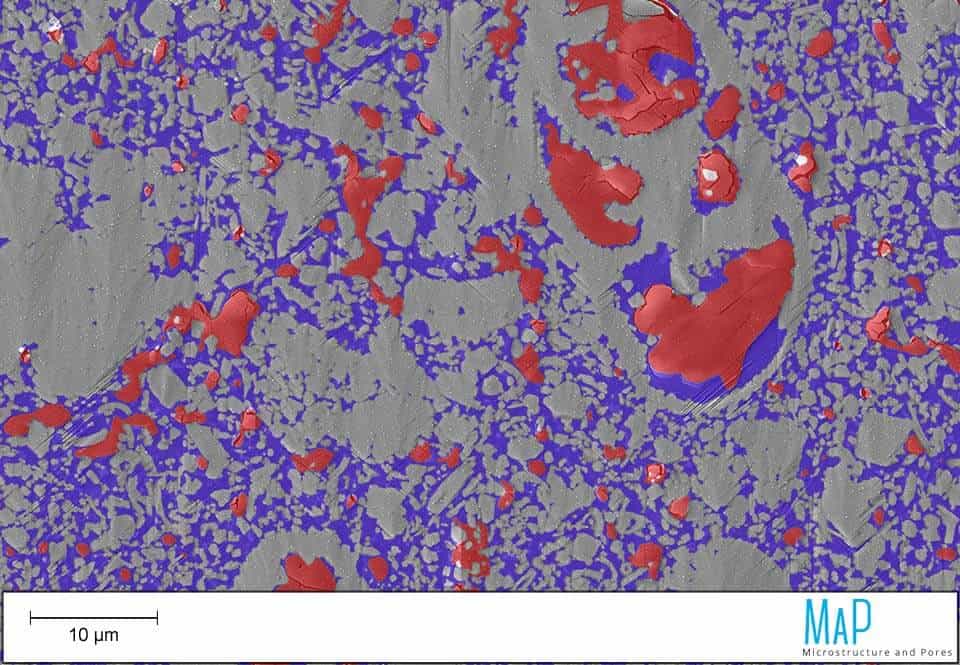News
Find a selection of MaP news and an archive of past work!
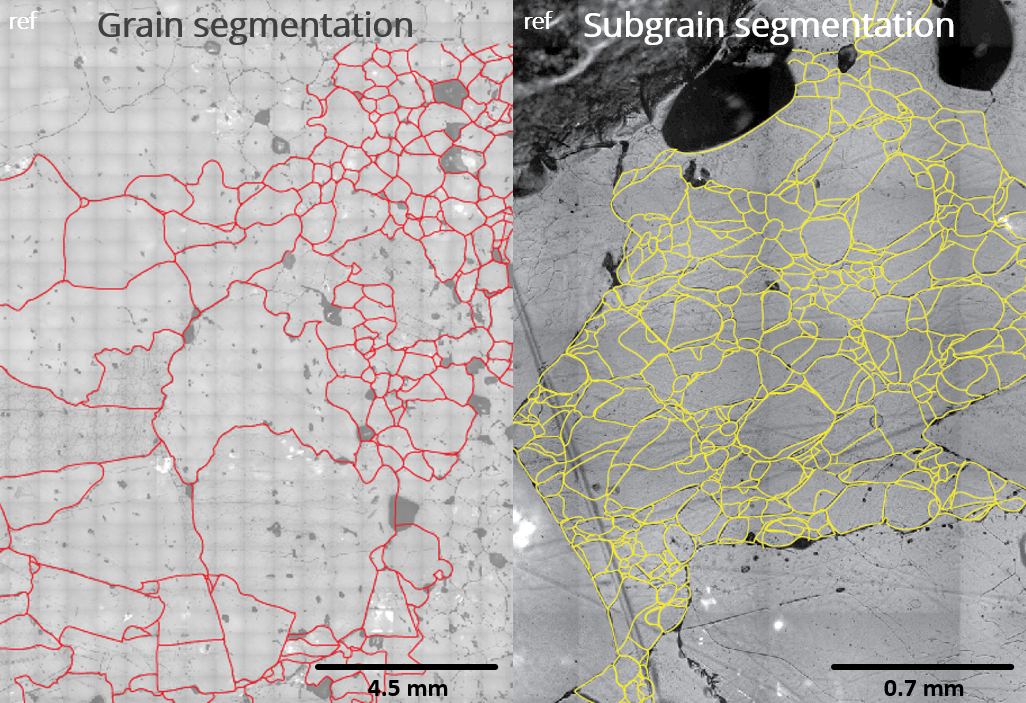
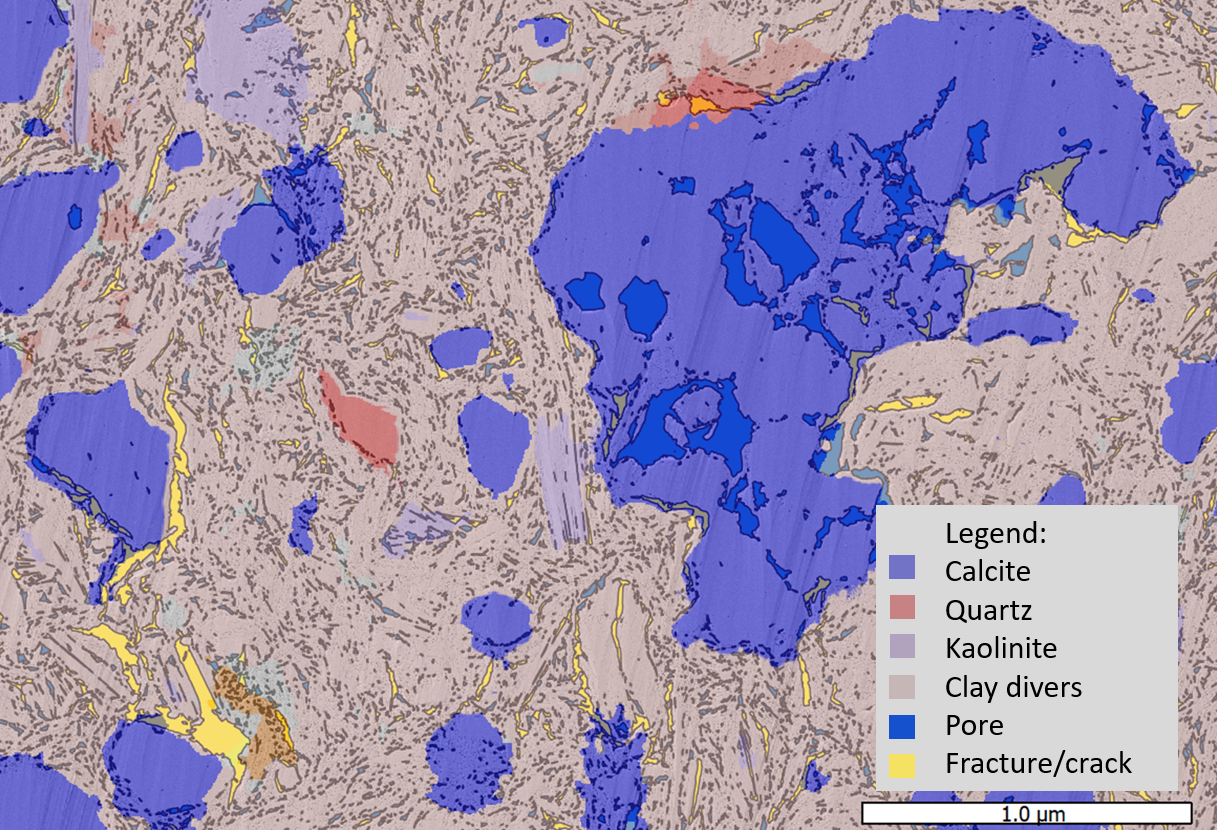
Join us at the upcoming Interpore conference in Qingdao
We will present our latest integration of SEM analysis, porosity and machine learning (Abstract ID: 762 ). Experience the debut of MaPro, our advanced mineral phase porosity tool, exclusively presented by MaP.
Visit our products section for further information on MaPro Mineral Phase Segmentation:
Services
Explore all MaP can do for You!
Technologies
Explore our scientific approach to microstructure analyses
BIB-SEM
Brod Ion Beam (BIB) Scanning Electron Microscopy (SEM) is one of our core technologies and allows Gigapixel imaging at nano-scale resolution
Cryo-BIB-SEM
Cryo-Broad Ion Beam sputtering combined with Cryo-Scanning Electron Microscopy enables us to analyze Cryo-preserved fluids inside pore networks and micro cracks
LMI-BIB-SEM
The Liquid Metal Injection (LMI) is used to fill the connected pore network of a sample to make analysing it via BIB-SEM easier
ViP-Virtual Petrograph
Using multi-scale automated petrographic analyses we are able to segment fracture networks, minerals, pores and mineral overgrowths in a sample
MaPro Image Analysis Software
Our unique Image Analysis Software showcases a modern approach to microstrucutre analysis and leads to faster and more precise analyses
BIB-SEM
Additional information regarding our BIB-SEM technology
How
Combining Broad Ion Beam (BIB) sputtering with Scanning Electron Microscopy (SEM) imaging including topography-, phase-, and chemical- mapping using Secondary Electrons (SE), Backscattered Electrons (BSE) and Energy Dispersive X-ray Spectroscopy (EDS). The argon ion sputtered surface allows Gigapixel imaging at nano-scale resolution of the microstructure followed by image processing.
Applications
High-resolution microstructural analysis of heterogeneous tight rocks and materials at a representative scale.
Cryo-BIB-SEM
Additional information regarding our Cryo-BIB-SEM technology
How
Combining Cryo-Broad Ion Beam sputtering with Cryo-Scanning Electron Microscopy and chemical analysis using EDS we are able to image and analyze Cryo-preserved fluids inside pore networks and micro cracks. The Cryo-loading station with Cryo-saw allows performing sample preparation for the Cryo-BIB under LN2 conditions.
Applications
High-resolution microstructural characterization of wet or soft materials, like oil/brine-filled reservoir rocks, oil shales, tissue, bio-materials, polymers, membranes.
LMI-BIB-SEM
Additional information regarding our LMI-BIB-SEM technology
How
During Liquid Metal Injection (LMI) the fusible alloy intrudes and fills the connected pore network. The degree of percolation depends on the critical pore throat diameter in the porous medium. The minimum pore throat diameter which can be filled depends on the injection pressure, following the Washburn equation. After the desired injection pressure is reached, the sample is cooled down under pressure and the metal solidifies in the pores. The following BIB-SEM investigation allows interrogating the 3D pore network.
Applications
Characterization of the connected pore network at nanometer resolution on a representative sample scale.
ViP – Virtual Petrograph
Additional information regarding our ViP-Virtual Petrograph technology
How
This system displays mosaic images of thin-sections with 10 nm accuracy at all settings of a conventional polarizing microscope from a highly compressed Gigapixel image file. Using multi-scale automated petrographic analyses we are able to segment fracture networks, minerals, pores and mineral overgrowths. Regions of interest can be selected for enhanced analyses like ion-polishing preparation followed by BIB-SEM.
Applications
Multi-scale, quantitative analysis of petrophysical attributes, automated analysis of sections, digital library.
MaPro – The Image Analysis Software
Additional information regarding our MaPro – Image Analysis technology
How
Machine Learning Algorithms developed with data from cement samples are now used in MaPs new MaPro software to correctly identify pore space and mineral composition of cements and other samples.
Accomplishments
The algorithms are now on a level with human decisions or even better, depending the quality of the sample. A newly developed Graphical User Interface (GUI) leads the user intuitively throught the process of analyzing the given set of images.
Vision
In the future, we will decide whether we will license the software for commercial use, or keep using it internally to provide the best results to our customers.
Products
What we do for You!
Rock Salt Microstructures
Slab photography, Light microscopy using ViP technology, (BIB)-SEM with EDS
Core Photographs & 360° Core Scans
This analysis provides valuable insights into the reservoir’s physical and petrophysical properties
Computer Tomography (CT) Analysis
Computer Tomography (CT) Data Reconstruction, Segmentation, and Visualization
Mineral Phase Porosity using our advanced MaPro tool
We developed a systematic approach for analyzing rock samples, focusing on precise quantification of porosity and determination of mineral composition. It includes rock sample preparation via Broad Ion Beam (BIB) polishing, followed by examination using Scanning Electron Microscopy (SEM) to reveal microstructural features.
An innovative aspect is the use of a pre-trained U-Net model for accurate pore segmentation from SEM images, improving efficiency. Additionally, high-resolution backscattered electron (BSE) imaging and low-resolution EDS data are employed to analyze mineral composition, with a semi-automatic phase segmentation tool aiding in identification and quantification. The alignment of SEM and BSE images allows for correlating porosity data with specific mineral phases, providing a comprehensive understanding of the rock's microstructural properties.
Further information:
Workflow for high‐resolution phase segmentation of cement clinker from combined BSE image and EDX spectral data
A critical catalogue of SEM‐EDS multispectral maps analysis methods and their application to hydrated cementitious materials
Prediction of Fault Rock Permeability With Deep Learning: Training Data from Transfer Samples of Fault Cores
Automated Carbonate Reservoir Pore and Fracture Classification by Multiscale Imaging and Deep Learning
Salt Rock Microstructure
Salt rocks possess distinctive rheological properties that are essential for geological and environmental investigations. Comprehending the material behavior and sealing capability of salt rocks is paramount for diverse applications, such as forecasting the development of solution-mined caverns and radioactive-waste repositories within salt formations. Our study of natural salt formations involves integrating scales from the core scale down to the grain boundary scale. This encompasses core analysis, quantification of structures at the slab scale, examination of deformation mechanisms using thin sections, and assessment of grain boundary processes using scanning electron microscopy. Tailored microstructural analysis is employed to examine salt samples tested in laboratory settings.
Optical micrographs obtained under reflected light are employed to determine grain and subgrain sizes in the recrystallized regions of the thin section. To achieve this, the surface of the thin section was etched following the protocol proposed by Urai et al. (1987). Advanced deep learning algorithms are then utilized to segment grain boundaries and subgrain boundaries. Grain size measurements are utilized as inputs for modeling grain size-sensitive flow, such as pressure solution creep. Subgrain size serves as an equilibrated piezometer for deriving the maximum differential stress in natural salt or salt deformed in the laboratory.
Further information:
Barabasch et al., 2023 Large grain-size-dependent rheology contrasts of halite at low differential stress
Baumann et al., 2022 CCC - integrated multiscale study of salt cavern abandonment in the Netherlands
Cement clinker composition analysis using MaPro
Our software tool MaPro helps cement producers lower CO2 emissions by optimizing clinker composition and reducing burning temperatures. With advanced deep learning, it delivers up to 80% higher accuracy in analyzing eco-efficient clinker phases compared to traditional EDS methods.
Further information:
Workflow for high‐resolution phase segmentation of cement clinker from combined BSE image and EDX spectral data
A critical catalogue of SEM‐EDS multispectral maps analysis methods and their application to hydrated cementitious materials
Prediction of Fault Rock Permeability With Deep Learning: Training Data from Transfer Samples of Fault Cores
Automated Carbonate Reservoir Pore and Fracture Classification by Multiscale Imaging and Deep Learning
BIB-SEM-Products
Below, You find a list of our BIB-SEM related products
Gigapixel image data
SE Topography maps
BSE Phase density maps
EDS Element maps
Pore analyses
Visible porosity
Pore size distributions
Pore shape and orientation
Surface area and roughness
Quantified mineralogy
Grain size distributions
Mineral fabric
Organic-matter distributions
Advanced pore analyses
Organic-matter porosity
Mineral phase porosity
Inter-/intraparticle porosity
Inferred porosity and permeability
Cryo-BIB-SEM-Products
Below, You find a list of our Cryo-BIB-SEM related products
cutting-edge Cryo-BIB-SEM method
Our unique cutting-edge Cryo-BIB-SEM method allows to image and investigate the fluid-filled microstructure and measure the:
In-situ Fluid chemistry
In-situ Wettability
In-situ Fluid distribution
This cutting-edge technology open new fields of research, for instance, for EOR screening or core and formation damage evaluation.
LMI-BIB-SEM-Products
Below, You find a list of our LMI-BIB-SEM related products
Pore analyses
Effective porosity
3D Pore connectivity
Percolation threshold
Porosity and permeability assessment
LMI resembles conventional Mercury Intrusion Porosimetry (MIP) and therefore we can evaluate MIP data as we visualize what part of the pore space is actually being filled with the liquid metal. Moreover, we can investigate the pore space between the cracks and correct for core damage. Permeability estimation can be obtained relatively easy by using the capillary tube model, as we know the effective porosity and the percolation threshold from the image data.
Core Photographs & 360° Core Scans
This analysis provides valuable insights into the reservoir’s physical and petrophysical properties. By segmenting photographs and core scan data using semi-automated image processing, these analyses help to bridge the gap between microscopic properties (such as grain size and porosity) and field-scale reservoir performance. This approach enables fracture characterization, identification of mineralogical variations, rock alteration, and other critical assessments.
Grain Shape Analysis
Our approach involves grain segmentation, followed by automated analysis that calculates sphericity and roundness values, providing valuable insights for geotechnical solutions during drilling.
Thin Section & Petrographic Analysis
Unlock geothermal potential with quantified mineralogical and textural data through our Thin Section & Petrographic Analysis. Using advanced petrographic techniques, we provide micron-scale insights into rock composition, porosity,and fracture networks, helping predict reservoir quality and thermal stability. By assessing grain size, fabric orientation, and secondary mineralization, we deliver a data-backed evaluation of rock behavior under geothermal conditions.
Computer Tomography (CT) Data Reconstruction, Segmentation, and Visualization
Maximize the potential of your geothermal exploration with advanced CT scanning and analysis. Our high-resolution imaging and expert data interpretation offer unmatched insights into cores, cavings, and cuttings. Accurately capture fine-scale rock textures, porosity, and fractures while preserving valuable samples and gaining a deeper understanding of the subsurface through digital rock physics.
Pore Connectivity Analysis
Break free from traditional mercury intrusion porosimetry with our innovative, non-toxic Liquid Metal Injection (LMI) method. This novel technique offers a safer, more sustainable, and high-resolution approach to assessing pore connectivity. By injecting a non-toxic liquid metal into your sample, we precisely map and visualize pore and fracture spaces at the microscopic level. Using scanning electron microscopy (SEM) imaging, LMI delivers accurate effective porosity measurements and identifies the percolation threshold, all without the hazards of mercury.
Markets
Explore the various fields our technologies and services can play a role in
References
MaP sounds to good to be true? Applications of our technology and projects are listed below...
Publications
Find a list of selected publications such as Journal Articles, Conference Contributions and White Papers
Application Notes
Explore the diverse applications of our technologies
Rock Salt
Triple-beam Ar-Ion-Milling with a Rotary Stage to Decorate Grain Boundaries and Substructures in Rock Salt
Multi-Scale Imaging and Quantification of Pores in Carbonate Rocks
Characterization of the wide range of pore sizes present in many carbonate rock types requires the integration of optical and electron microscopy. At MaP we developed such a routine in order to capture the porosity in a representative way. At first, automated optical microscopy imaging using the Virtual Petrograph (ViP) allows quantification of the macroporosity. Quantification of the microporosity is obtained by analyzing SEM images recorded from BIB-polished sample cross-sections. Pore space is segmented from the ViP and BIB-SEM image data using advanced image processing algorithms. From the integration of both outcomes we can obtain the porosity, pore size distribution and pore geometry and undertake pore type characterization and classification. Additional Liquid Metal Injection (LMI) followed by BIB-SEM surveys the connectivity of the macro- and microporosity.
Pore Space Quantification and Distribution in an Organic-rich Shale
Physical porosity is a crucial property in shales as it controls the storage capacity to a large extent and forms the transport system. Imaging the visible pore space, the associated mineralogy, and organic matter provide insight into the relevant phases for storage and transport and allow for upscaling. However, it is a challenge to measure the physical porosity in a representative way and at high resolution because of sample heterogeneity as well as small pore sizes, which are typically below the micrometer in those fine-grained rocks. Using our BIB-SEM technology we are able to assess the sample heterogeneity and image the typical pores at nanometer scale resolution, commonly employing a pixel size of 15 nanometer, in a representative way. Moreover, core damage like cracks can be quantified and corrected for bulk porosity and permeability measurements.
Triple-beam Ar-Ion-Milling with a Rotary Stage to Decorate Grain Boundaries and Substructures in Rock Salt
Decoration of grain boundaries in polycrystalline rocks has a long tradition in Structural Geology as in a monomineralic rock the recrystallized grain size is a good indicator for the paleostress conditions. Understanding the mechanical properties of rock salt and its deformation behavior is of major importance for the prediction of long-term stability of nuclear waste repositories, and for our understanding of the dynamics of salt-related sedimentary ba sins which host the majority of oil and gas deposits on Earth. Common methods to expose grain boundaries and substructures in rock salt are chemical etching procedures using brine or water or the gamma irradiation method.
Recent Projects
Get to know our recent Projects
Auto-Vitrinite
Development of an autonomous measuring procedure for the automated determination of fossilized organic matter and thermal maturity of sediment rocks
GameChanger
Automated carbonate reservoir pore and fracture classification by multiscale imaging and deep learning
Permea2
Deformation dependent development of fault zones and the influence of clay smear on the barrier behaviour
Auto-Vitrinite: Development of an autonomous measuring procedure for the automated determination of fossilized organic matter and thermal maturity of sediment rocks.
We are working on an innovative prototype of a standardized sample preparation protocol, followed by an automated characterization of thermal maturity and additional parameters of sediments based on SEM images.
This project's objective is to establish a systematic and automated measuring procedure for determining the thermal maturity of Vitrinites and parameters for the classification of sedimentary deposits. Our approach is based on a novel preparation procedure using BIB-SEM analysis to replace conventional Vitrinite reflectance measurements. Combined with machine learning algorithms, we aim to introduce a systematic identification of macerals and mineral matter on ion-structured surfaces using the SEM. Generating a constantly growing database, which could be of use to analyze sediment layers, specifically interesting for the oil and gas industry, for nuclear waste storage, CO2 and H2 storage.
This project is implemented as a FuE-cooperation Project with the Institute for Geology and Geochemistry of Petroleum and Coal at RWTH Aachen University. It is funded by the Federal Ministry for Economic Affairs and Climate Action (BMWi)'s "Central Innovation Programme" (ZIM).
Keywords: Vitrinites, Thermal Maturity, Macerals, Ion etching, Ion polishing, Machine learning, Maceral detection
GameChanger: Automated carbonate reservoir pore and fracture classification by multiscale imaging and deep learning
Carbonate rocks are heterogeneous at microscopic and macroscopic scales, hence, their characterization is challenging, expensive and time-consuming. Petrophysical analyses cannot provide information on the full geometry and pore space connectivity. Moreover, these analyses are time consuming and require evaluation by experts. Current imaging techniques do not cover a representative range of scales, have difficulty to image microporosity, and are not well integrated with the expert knowledge available. An automated tool for identifying and classifying pores and fractures does not yet exist. This contribution presents a novel multi-scale workflow dedicated to carbonate rocks that integrates innovative methods with state-of-the-art imaging technologies for automated classification of connected pores from nano- to centimeter scale: 1) Virtual Petrograph (ViP), an automated high resolution petrographic microscope to acquire and visualize high-resolution cross-polarized image-maps of ultra-thin sections; 2) Broad Ion Beam – Scanning Electron Microscopy (BIB-SEM), a 2D preparation and imaging technique that preserves the most delicate microstructures and images microporosity in detail over representative areas; 3) Liquid Metal Injection (LMI) followed by BIB-SEM, a porosimetry technique to distinguish connected and unconnected pore space. Validated pore maps will be the input for statistical analysis and used to train deep learning algorithms for pore segmentation and classification.
The project was funded by Shell’s GameChanger program and successfully closed June 2021, see also https://www.shell.com/energy-and-innovation/entrepreneurs-and-start-ups/shell-gamechanger/portfolio.html.
See further details in this conference paper presented at 82nd EAGE Conference & Exhibition in Amsterdam, The Netherlands 18-21 October 2021: https://www.earthdoc.org/content/papers/10.3997/2214-4609.202011981.
Or DOI: https://doi.org/10.3997/2214-4609.202011981.
Keywords: Pore segmentation, Pore classification, Pore connectivity, Carbonate pores, Deep learning
Permea 2: Deformation dependent development of fault zones and the influence of clay smear on the barrier behaviour
Energy storage in the subsurface is primarily influenced by the permeability of the host rocks and its geological constrains. In this project, MaP is working on an innovative prototype of a model for the prediction of permeability in fault zones from microstructural data.
The microstructural analysis by using imaging microanalytical techniques allows the quantification of the fault zones on a cm-nm scale. The focus is on the classification of the elements (building blocks) of the damage zone and the fault core. The porosity (fractures and pores), as well as pore space connectivity, using liquid metal injection in combination with broad ion beam preparation, virtual petrography and scanning electron microscopy, are measured to assign permeability tensors and to model permeability in fault zones.
Project partners are the Johannes Gutenberg-Universität Mainz, IGEM - Institut für geothermisches Ressourcenmanagement, RWTH Aachen University and the Friedrich Alexander-Universität Erlangen.
Publications
Below You find a table with some of our scientific publications
At MaP we welcome various kind of partnerships
Besides, we are now also on the Einstein Telescope Company and Research Institute Mapping Tool! Visit their webpage here.
We are pleased to be working with Kearney Point Resources Ltd, here, providing consultation in Subsurface Evaluation, Sealing and Containment Analysis, CO2 Seal Integrity Analysis and more.
E-Mail us!
We at MaP are always happy to hear from our clients or business partners. Just click the button on the right to message us.
Our Team
Learn more about the people behind our vision
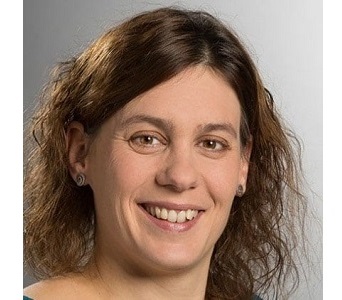
Eva Wellmann, Dipl.-Geol
Geologist - Project Leader
Mingze Jiang, MSc.
Software Engineer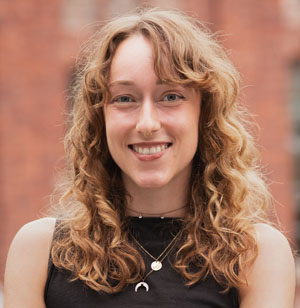
Dr. Julia Schmitz
Geologist - Project LeaderContact
Find us! We won't bite.
Junkerstraße 93
52064 Aachen
info@m-a-p.expert
+49 241 99030094
News
Find a selection of MaP news and an archive of past work!
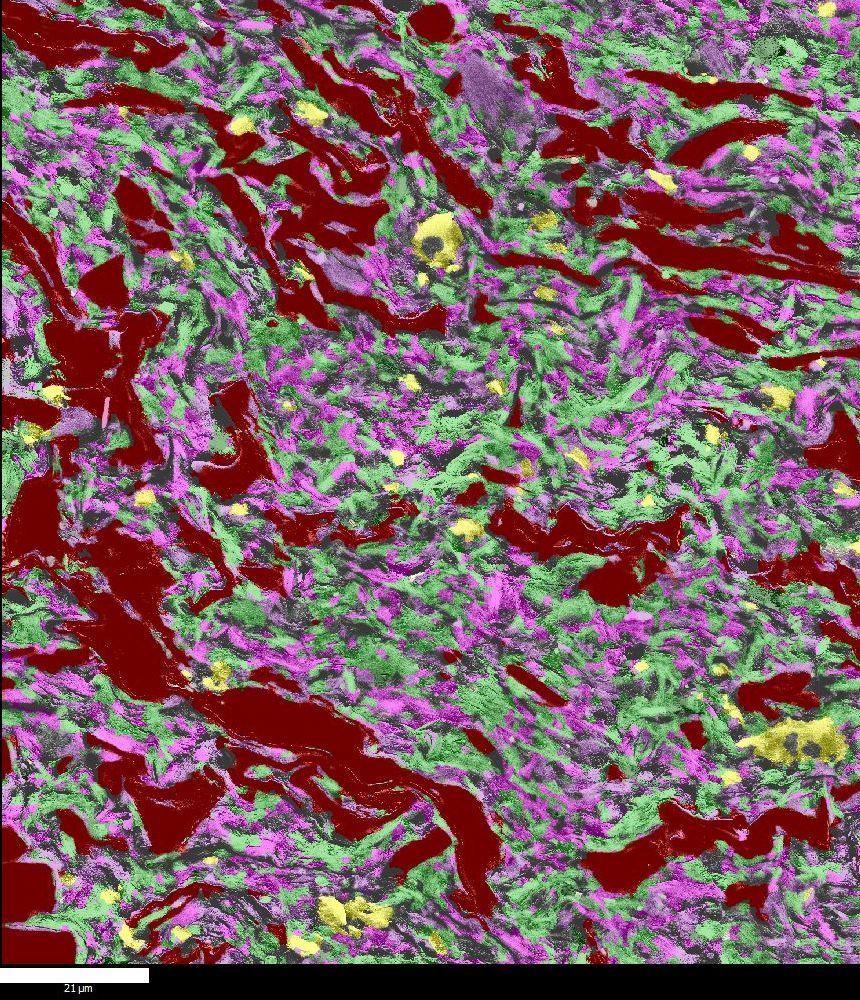

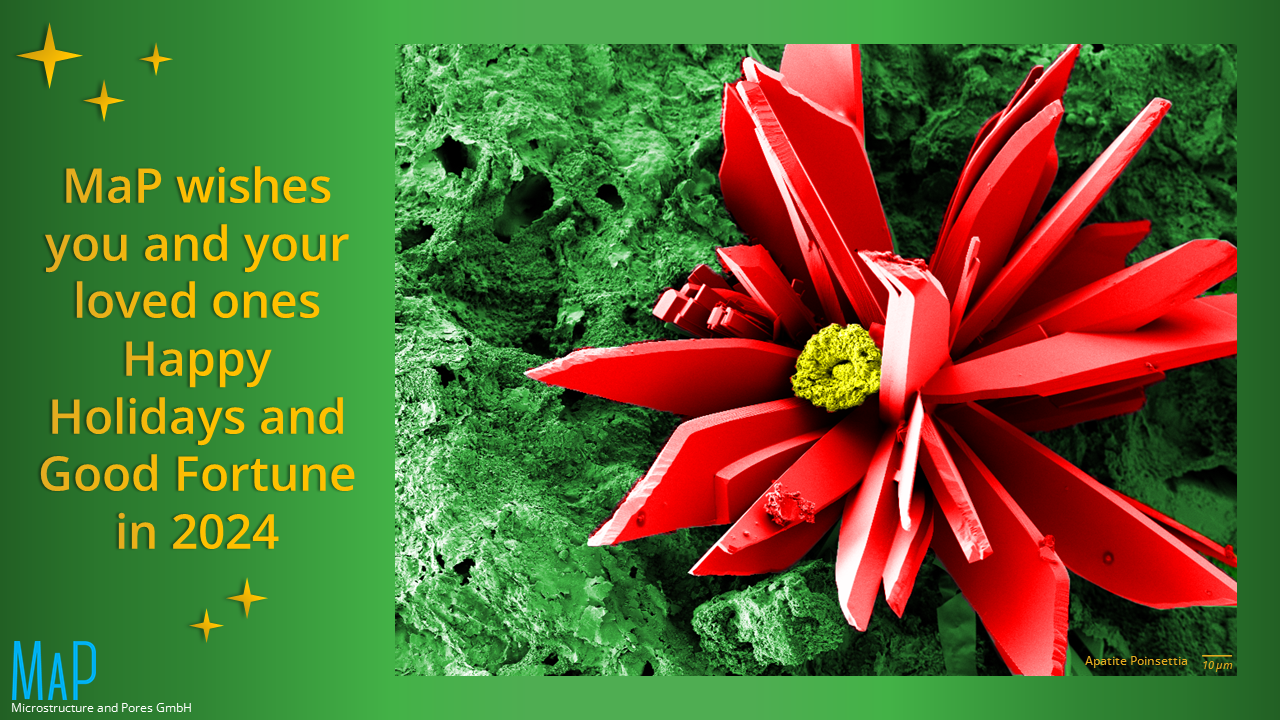
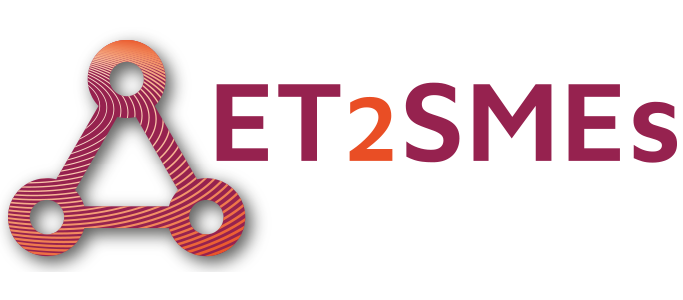


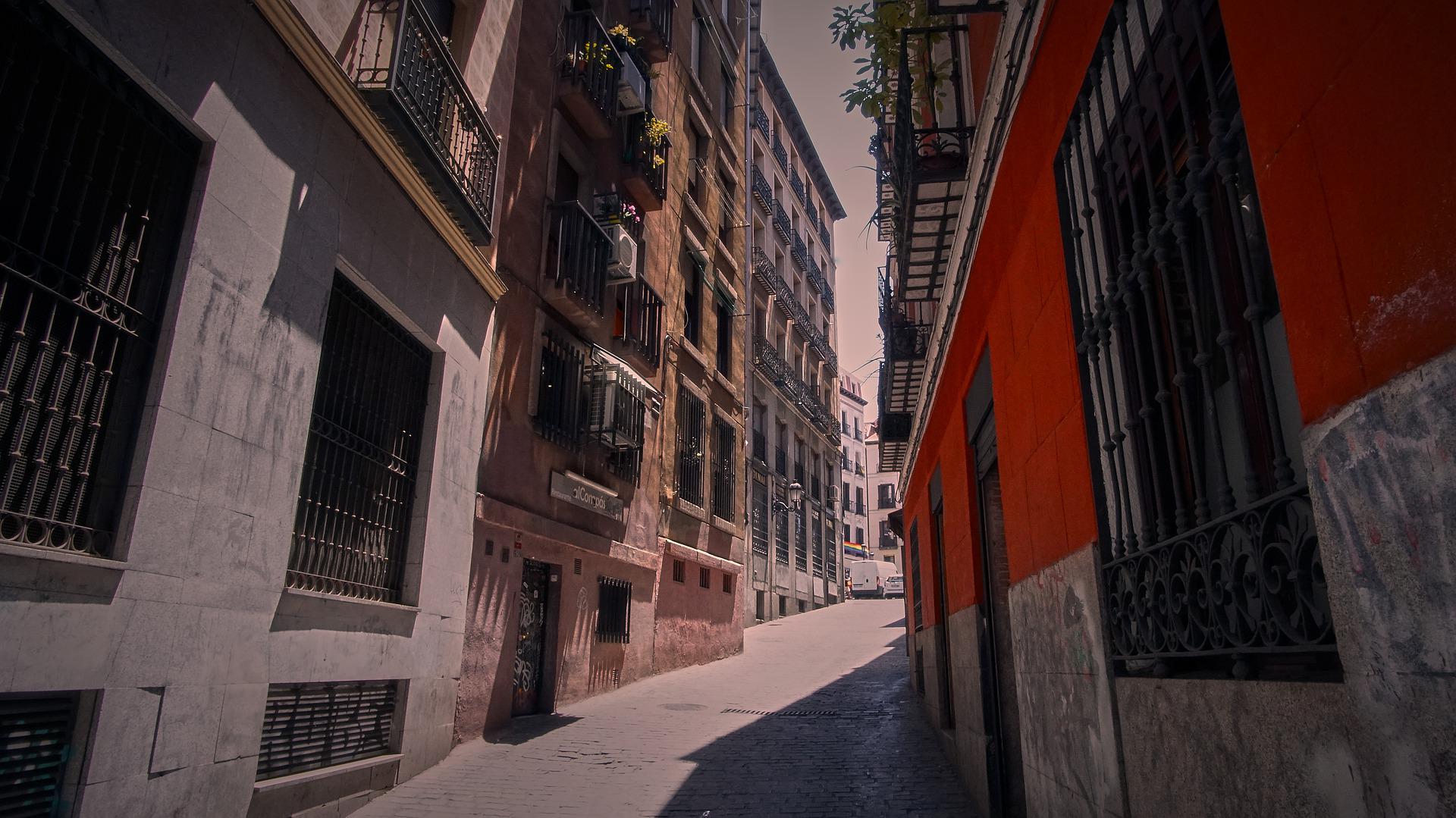
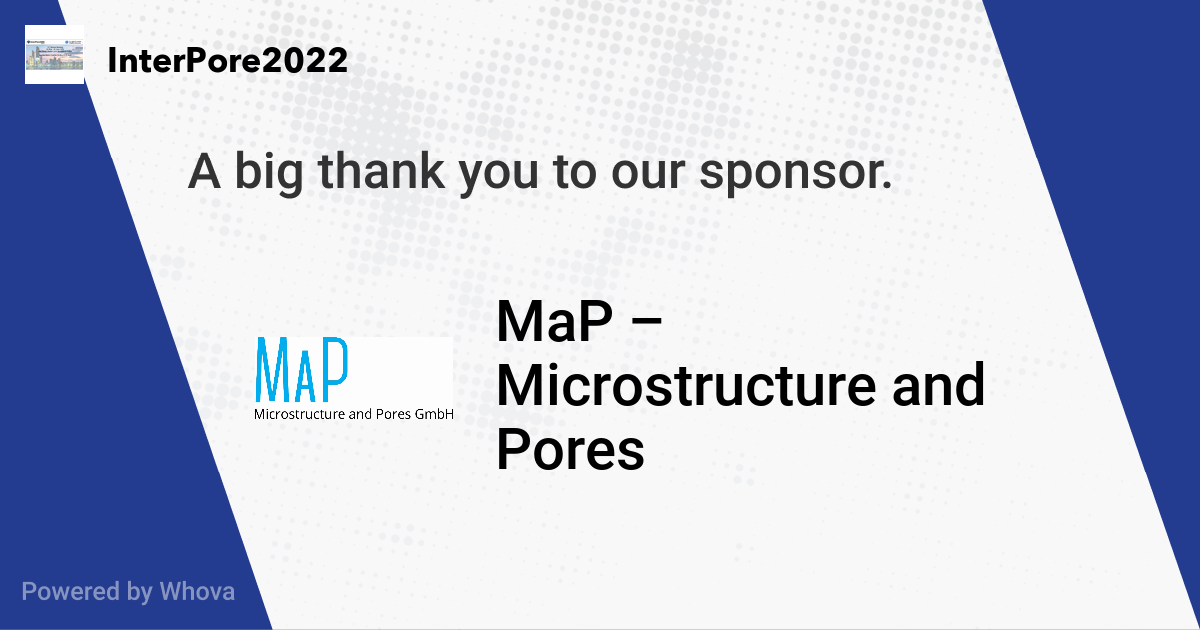


More Publications
Below You find a table with some of our scientific publications
| Date | Title | Authors | Medium |
|---|---|---|---|
| 2022 | Grain size dependent large rheology contrasts of halite at low deviatoric stress: evidence from microstructural study of naturally deformed gneissic Zechstein-2 rock salt (Kristallbrockensalz) from the Northern Netherlands | Jessica Barabasch, Joyce Schmatz, Jop Klaver, Alexander Schwedt, Janos L Urai | EGU22 |
| 2022 | Comparative petrophysical characterization, BIB-SEM imaging and permeability models of tight carbonates: Case study Upper Jurassic (Malm ß), N Bavaria | Simon Freitag, Jop Klaver, Iulian S Malai, Norbert Klitzsch, Janos L Urai, Harald Stollhofen, Wolfgang Bauer, Joyce Schmatz | Research Square |
| 2022 | Prediction of Fault Rock Permeability With Deep Learning: Training Data from Transfer Samples of Fault Cores | J Schmatz, J Klaver, E Wellmann, M Jiang, W Kraus, S Freitag, A Hoffmann, H Deckert | European Association of Geoscientists & Engineers |
| 2022 | Workflow for high-resolution phase segmentation of cement clinker from combined BSE image and EDX spectral data | Mingze Jiang, Christiane Rößler, Eva Wellmann, Jop Klaver, Florian Kleiner, Joyce Schmatz | Journal of Microscopy |
| 2022 | Analogue experiments of normal fault formation in multi-layers of alternating strength | Utomi Izediunor, Susanne Buiter, Joyce Schmatz | EGU22 |
| 2022 | CCC-integrated multiscale study of salt cavern abandonment in the Netherlands | Tobias S Baumann, Pierre Bérest, Benoit Brouard, Martijn ter Braack, Marinus den Hartogh, Boris JP Kaus, Jop Klaver, Paul BH Oonk, Anton Popov, Joyce Schmatz, Janos L Urai, Els AM Wijermars | EarthArXiv |
| 2022 | Improved Understanding of Hydrocarbon Expulsion and Associated Fracturing During Successive Stages of Maturation: Insights from the Artificial Maturation of Organic-Rich, Immature to Early Mature Source Rocks | Israa S Abu-Mahfouz, Garri Gaus, Sebastian Grohmann, Jop Klaver, Joe Cartwright, Erdem Idiz, Ralf Littke, Janos L Urai, Tadeusz Patzek, Volker Vahrenkamp | OnePetro |
| 2021 | Characterisation of natural and remoulded Onsøy clay with focus on the influence of mica | Wolfgang Lieske, Wiebke Baille, Joyce Schmatz, Stephan Kaufhold, Reiner Dohrmann | Engineering Geology |
| 2021 | Superpixel segmentations for thin sections: evaluation of methods to enable the generation of machine learning training data sets | Jiaxin Yu, Florian Wellmann, Simon Virgo, Marven von Domarus, Mingze Jiang, Joyce Schmatz, Bastian Leibe | EarthArXiv |
| 2021 | Reduced Drying Time of Anodes for Lithium-Ion Batteries through Simultaneous Multilayer Coating | Jana Kumberg, Werner Bauer, Joyce Schmatz, Ralf Diehm, Max Tönsmann, Marcus Müller, Kevin Ly, Philip Scharfer, Wilhelm Schabel | Energy Technology |
| 2021 | Model for calcite spherulite formation in organic, clay-rich, lacustrine carbonate shales (Barbalha Formation, Aptian, Araripe Basin, NE Brazil) | Hannes Claes, Tiago Miranda, Thiago C Falcão, Jeroen Soete, Zahra Mohammadi, Laura Zieger, Marcelle M Erthal, Jéssica Aguillar, Joyce Schmatz, Andreas Busch, Rudy Swennen | Marine and Petroleum Geology |
| 2021 | A comparative study on methods for determining the hydraulic properties of a clay shale | Lisa Winhausen, Alexandra Amann-Hildenbrand, Reinhard Fink, Mohammadreza Jalali, Kavan Khaledi, Pooya Hamdi, Janos L Urai, Joyce Schmatz, Florian Amann | Geophysical Journal International |
| 2021 | Automated Carbonate Reservoir Pore and Fracture Classification by Multiscale Imaging and Deep Learning | J Klaver, J Schmatz, R Wang, M Jiang, LM Kleipool, A Cilona, JL Urai | 82nd EAGE Annual Conference & Exhibition |
| 2021 | An Integrated Imaging Study of the Pore Structure of the Cobourg Limestone—A Potential Nuclear Waste Host Rock in Canada | Zhazha Hu, Shuangfang Lu, Jop Klaver, Jan Dewanckele, Alexandra Amann-Hildenbrand, Garri Gaus, Ralf Littke | Minerals |
| 2021 | Micromechanisms leading to shear failure of Opalinus Clay in a triaxial test: a high-resolution BIB–SEM study | Lisa Winhausen, Jop Klaver, Joyce Schmatz, Guillaume Desbois, Janos L Urai, Florian Amann, Christophe Nussbaum | Solid Earth |
| 2021 | Hyrous Pyrolysis of Source Rock Plugs: Geochemical and Visual Investigations and Implications for Primary Mirgation | S Grohmann, G Gaus, J Klaver, I Abu-Mahfouz, Volker Vahrenkamp, Tadeusz Patzek, J Urai, R Littke | IMOG 2021 |
| 2021 | The evolution of slate microfabrics during progressive accretion of foreland basin sediments | Ismay Vénice Akker, Alfons Berger, Christoph E Schrank, Michael WM Jones, Cameron M Kewish, Jop Klaver, Marco Herwegh | Journal of structural geology |
| 2021 | Experimental Investigation of Gas Dynamic Effects Using Nanoporous Synthetic Materials as Tight Rock Analogues | Steffen Nolte, Reinhard Fink, Bernhard M Krooss, Alexandra Amann-Hildenbrand, Yue Wang, Moran Wang, Joyce Schmatz, Jop Klaver, Ralf Littke | Transport in Porous Media |
| 2021 | Mineralogical, BIB‐SEM and petrophysical data in seal rock analysis: a case study from the Vienna Basin, Austria | David Misch, Wolfgang Siedl, Michael Drews, Bin Liu, Jop Klaver, Magdalena Pupp, RF Sachsenhofer | Journal of Petroleum Geology |
| 2020 | Generating a pixel-wise annotated training dataset to train ML algorithms for mineral identification in rock thin sections | Jiaxin Yu, Joyce Schmatz, Marven von Domarus, Mingze Jiang, Simon Virgo, Bastian Leibe, Florian Wellmann | EGU General Assembly Conference Abstracts |
| 2020 | Anticline growth by shortening during crustal exhumation of the Moroccan Atlantic margin | David Fernández-Blanco, Mohamed Gouiza, Remi Charton, Christian Kluge, Jop Klaver, Kirsten Brautigam, Giovanni Bertotti | Journal of Structural Geology |
| 2020 | Pore space characteristics of the Upper Visean ‘Rudov Beds’: insights from broad ion beam scanning electron microscopy and organic geochemical investigations | David Misch, Jop Klaver, Doris Gross, Javad Rustamov, RF Sachsenhofer, Joyce Schmatz, JL Urai | Geological Society, London, Special Publications |
| 2020 | Stress sensitivity of porosity and permeability of Cobourg limestone | Zhazha Hu, Jop Klaver, Joyce Schmatz, Jan Dewanckele, Ralf Littke, Bernhard M. Krooss, Alexandra Amann-Hildenbrand | Engineering Geology Volume 273 |
| 2019 | Transport properties of the Cobourg Limestone: A benchmark investigation | C. A. Davy, Zhazha Hu , A.P.S. Selvadurai, Jop Klaver, M.-C. Willemetz, F. Agostini, F. Skoczylas, Jan Dewanckele, Alexandra Amann-Hildenbrand and Roland Lenormand | SCA2019-037 |
| 2019 | Non-marine carbonate reservoir architecture, genesis and petrophysical characterisation from analogues-Travertines, Shrubs, Laminites and Spherulites. | H Claes, J Soete, MM Erthal, Á Török, Z Mohammadi, C Aratman, T Siqueira de Miranda, A Mancini, E Capezzuoli, J Schmatz, J Aguillar, L Zieger, R Swennen. | First EAGE Workshop on Pre-Salt Reservoir: from Exploration to Production 2019, (1), 1-5. |
| 2019 | SAXS and WAXS Microscopy Applied to Mudrocks: A New Method for Systematic Multiscale Studies of Porosity, Pore Orientation and Mineralogy. | L Leu, P Bertier, A Georgiadis, A Busch, A Diaz, J Klaver, J Schmatz, V. Lutz-Bueno, J. Ihli, H. Ott and M. Blunt | Sixth EAGE Shale Workshop 2019 (1), 1-4. |
| 2019 | Solid bitumen in shales: Petrographic characteristics and implications for reservoir characterization. | D Misch, D Gross, G Hawranek, B Horsfield, J Klaver, F Mendez-Martin, JL Urai, S Vranjes-Wessely, RF Sachsenhofer, J Schmatz, J Li and C Zou. | International Journal of Coal Geology 205, 14-31. |
| 2018 | Factors controlling shale microstructure and porosity: A case study on upper Visean Rudov beds from the Ukrainian Dneiper–Donets Basin. | D Misch, J Klaver, D Gross, V Mayer-Kiener, F Mendez-Martin, J Schmatz, RF Sachsenhofer. | AAPG Bulletin 102 (12), 2629-2654. |
| 2018 | Model-free classification of X-ray scattering signals applied to image segmentation. | V Lutz-Bueno, C Arboleda, L Leu, MJ Blunt, A Busch, A Georgiadis, Pieter Bertier, Joyce Schmatz, Zsuzsanna Varga, Pablo Villanueva-Perez, Z Wang, Maxime Lebugle, C David, Marco Stampanoni, Ana Diaz, Manuel Guizar-Sicairos, Andreas Menzel. | Journal of applied crystallography 51 (5), 1378-1386. |
| 2018 | KG²B, a collaborative benchmarking exercise for estimating the permeability of the Grimsel granodiorite–Part 1: measurements, pressure dependence and pore-fluid effects. | C David, J Wassermann, F Amann, DA Lockner, EH Rutter, T Vanorio, ... J Klaver, A Clark. | Geophysical Journal International 215 (2), 799-824. |
| 2018 | KG²B, a collaborative benchmarking exercise for estimating the permeability of the Grimsel granodiorite—Part 2: modelling, microstructures and complementary data. | C David, J Wassermann, F Amann, J Klaver, C Davy, J Sarout, L Esteban, ... | Geophysical Journal International 215 (2), 825-843. |
| 2018 | Multiscale porosity changes along the pro-and retrograde deformation path: an example from Alpine slates. | IV Akker, J Kaufmann, G Desbois, J Klaver, LJ Urai, A Berger, M Herwegh. | Solid Earth 9, 1141-1156. |
| 2018 | Multiscale porosity estimates of slates. | I Vénice Akker, J Kaufmann, G Desbois, J Klaver, JL Urai, A Berger, ... | EGU General Assembly Conference Abstracts 20, 2039. |
| 2018 | Formation of slaty cleavage along a temperature gradient. | I Vénice Akker, G Desbois, J Klaver, JL Urai, A Berger, M Herwegh. | EGU General Assembly Conference Abstracts 20, 2033. |
| 2018 | Image-based microstructural analysis: A BIB-SEM study on Upper Visean shales from the Dniepr-Donets Basin (Ukraine). | D Misch, J Klaver, J Schmatz, JL Urai, D Gross, RF Sachsenhofer. 2018. | EGU General Assembly Conference Abstracts 20, 6276. |
| 2018 | Pore space characteristics of the Upper Visean ‘Rudov Beds’: insights from broad ion beam scanning electron microscopy and organic geochemical investigations. | D Misch, J Klaver, D Gross, J Rustamov, RF Sachsenhofer, J Schmatz, ... | Geological Society, London, Special Publications 484, SP484. 9. |
| 2017 | Nanoscale morphology of brine/oil/mineral contacts in connected pores of carbonate reservoirs: Insights on wettability from Cryo-BIB-SEM. | J Schmatz, J Klaver, M Jiang, JL Urai. | SPE Journal 22 (05), 1,374-1,384. |
| 2017 | Enhanced surface flatness of vitrinite particles by broad ion beam polishing and implications for reflectance measurements. | A Grobe, J Schmatz, R Littke, J Klaver, JL Urai. | International Journal of Coal Geology 180, 113-121. |
| 2017 | Standardized Automated Multiscale Imaging Technologies to Quantify Microstructure and Petrophysical Properties in a Range of Rock Types. | J Schmatz, J Klaver, S Virgo, M Jiang, C von Hagke, G Desbois, JL Urai. | 79th EAGE Conference and Exhibition 2017 2017 (1), 1-5. |
| 2017 | Liquid Metal Injection: A novel tool to investigate connected porosity and transport pathways in unconventional reservoirs. | J Klaver, J Schmatz, JL Urai. | SPE Europec featured at 79th EAGE Conference and Exhibition. |
| 2017 | Micro-fabric damages in Boom Clay inferred from cryo-BIB-SEM experiment: recent results. | G Desbois, J Schmatz, J Klaver, JL Urai. | EGU General Assembly Conference Abstracts 19, 4461. |
| 2017 | Deformation mechanisms and resealing of damage zones in experimentally deformed cemented and un-cemented clay-rich geomaterials, at low bulk strain. | G Desbois, JL Urai, B Schuck, N Hoehne, A Oelker, P Bésuelle, Gioacchino Viggiani, Joyce Schmatz, Jop Klaver. | EGU General Assembly Conference Abstracts 19, 4447. |
| 2017 | Investigation of transport pathways in shales and tight reservoirs by means of liquid metal injection. | J Klaver, J Schmatz, G Desbois, JL Urai. | EGU General Assembly Conference Abstracts 19, 14990. |
| 2017 | Microstructure formation of lithium-ion battery electrodes during drying–An ex-situ study using cryogenic broad ion beam slope-cutting and scanning electron microscopy (Cryo-BIB-SEM). | S Jaiser, J Kumberg, J Klaver, JL Urai, W Schabel, J Schmatz, P Scharfer. | Journal of Power Sources 345, 97-107. |
| 2017 | Lessons learned from electron microscopy of deformed Opalinus clay. | B Laurich, JL Urai, G Desbois, J Klaver, C Vollmer, C Nussbaum. | Ferrari A., Laloui L. (eds) Advances in Laboratory Testing and Modelling of Soils and Shales (ATMSS). ATMSS 2017. Springer Series in Geomechanics and Geoengineering. Springer, Cham, 345-350. |
| 2017 | Using BIB-SEM imaging for permeability prediction in heterogeneous shales. | CJA Sinn, J Klaver, R Fink, M Jiang, J Schmatz, R Littke, JL Urai. | Geofluids 2017. |
| 2016 | Microstructural characterisation of the Ypresian clays (Kallo-1) at nanometre resolution, using broad-ion beam milling and scanning electron microscopy. | S Hemes, G Desbois, J Klaver, JL Urai. | Netherlands Journal of Geosciences 95 (3), 293-313. |
| 2016 | Nanostructural Investigations on Potential Gas Shales of the Dniepr-Donets Basin (Ukraine). | D Misch, J Klaver, D Groß, J Schmatz, RF Sachsenhofer, F Mendez-Martin. | 78th EAGE Conference and Exhibition 2016, cp-490-00754. |
| 2016 | Porosity and pore connectivity in immature and artificially matured source rock using BIB-SEM, WMI and MIP. | JM Klaver, J Schmatz, B Krooss, M Stockhausen, L Schwark, JL Urai. | Fifth EAGE Shale Workshop 2016 (1), 1-5. |
| 2016 | Overview of Integrated Microstructural Studies to Better Understand Mechanical and Fluid Flow Properties of Fine Grained. | M Klaver, B Laurich, G Desbois, S Hemes, J Schmatz, JL Urai. | Fifth EAGE Shale Workshop 2016 (1), 1-5. |
| 2016 | BIB-SEM pore characterization of mature and post mature Posidonia Shale samples from the Hils area, Germany. | J Klaver, G Desbois, R Littke, JL Urai. | International Journal of Coal Geology 158, 78-89. |
| 2016 | Microstructure and porosity of deformed and undeformed claystones from mm to nm scale. | G Desbois, J Urai, S Hemes, B Laurich, M Houben, J Klaver, B Schuck, ... | 5th International Workshop on the testing of low permeability materials. |
| 2016 | Application of BIB–SEM technology to characterize microstructure and pores in mudstone at a range of scales. | J Klaver, J Schmatz, G Desbois, S Hemes, J Urai. 2016 | 2nd Petrus-OPERA Conf. Radioact. Waste Manag. Geol. Dispos., Delft, 55-5. |
| 2015 | Nanoscale imaging of pore‐scale fluid‐fluid‐solid contacts in sandstone. | J Schmatz, J Urai, S Berg, H Ott. | Geophysical research letters, 42(7), 2189-2195. |
| 2015 | BIB-SEM characterization of pore space morphology and distribution in postmature to overmature samples from the Haynesville and Bossier Shales. | J Klaver, G Desbois, R Littke, J Urai. | Marine and petroleum Geology 59 (2015): 451-466. |
| 2015 | Nanoscale porosity analysis in geological materials. | M Jiang, J Klaver, J Schmatz, J Urai. | Acta Stereologica (2015) |
| 2013 | Qualitative and Quantitative Characterization of Porosity in a Low Porous and Low Permeable Organic Rich Shale by Combining Broad Ion Beam and Scanning Electron Microscopy (BIB-SEM). | J Klaver, G Desbois, J Urai. | No. NEA-RWM-CLAYCLUB--2013-1. 2013. |
| 2012 | BIB-SEM study of the pore space morphology in early mature Posidonia Shale from the Hils area, Germany. | J Klaver, G Desbois, J Urai, R Littke | International Journal of Coal Geology 103 (2012): 12-25. |
| 2011 | The interaction of migrating grain boundaries and fluid inclusions in naturally deformed quartz: A case study of a folded and partly recrystallized quartz vein from the Hunsrück Slate, Germany. | J Schmatz, J Urai. | Journal of Structural Geology 33.4 (2011): 468-480. |
| 2010 | Clay smear processes in mechanically layered sequences—Results of water-saturated model experiments with free top surface. | J Schmatz, M Holland, S Giese, W van der Zee, J Urai. | Journal of the Geological Society of India 75 (2010): 74-88. |


